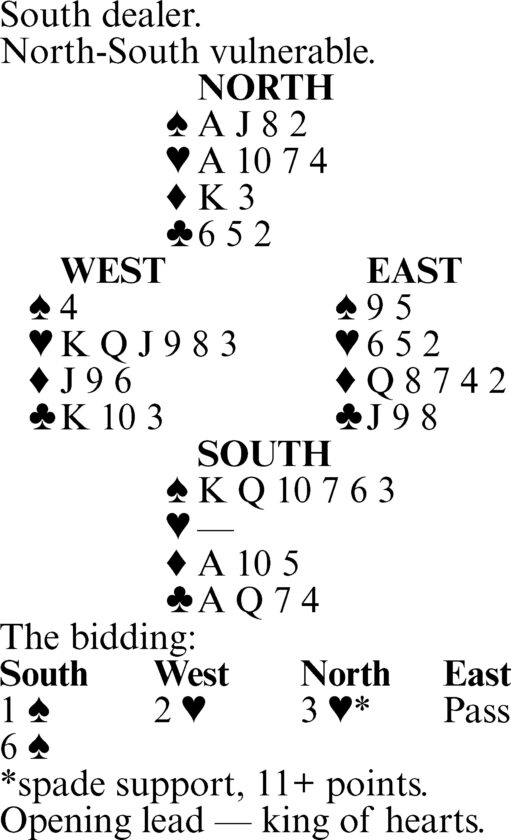Bridge by Steve Becker

There’s a lot of luck in all forms of bridge, but there’s also a lot of skill. The luck, especially in Chicago or rubber bridge, consists mostly of holding good cards — a matter over which you have no control — but the skill is another matter altogether. Here you do have control, and how you exercise that control has a tremendous bearing on how you fare.
Take a case like this one. South’s leap to six spades is not scientific; it is simply a good general-direction shot. The odds favor making a slam after North bids three hearts, so South is right to bid it.
But when dummy comes down, South’s chances appear to plummet considerably. West is likely to have the king of clubs for his two-heart overcall, increasing the possibility that declarer might lose two club tricks.
Situations like this demand special attention. You’d rather not bank everything on a club finesse that’s a favorite to lose, so you look for an alternative line of play.
Accordingly, you win the heart lead with the ace, discarding a club, and ruff a heart. After drawing trump, you ruff another heart. A diamond to the king and a diamond to the ace are followed by a diamond ruff in dummy, setting the stage for a loser-on-loser play. You next lead the ten of hearts and on it discard the seven of clubs!
West wins but has no safe return. He must either lead a club into your A-Q or return a heart, allowing you to discard the queen of clubs as you ruff in dummy. Either way, the slam is in the bag.
Tomorrow: Only one right play.

